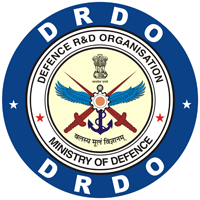Simulation of Thermo-fluid Interactions in Cryogenic Stage Turbine Startup System Using AUSM+-UP-based Higher-order Accurate Flow Solver
DOI:
https://doi.org/10.14429/dsj.59.1515Keywords:
Unstructured meshes, solid motor, AUSM -UP based finite volume solver, turbine inlet manifold, least square reconstruction, solution mapped, flux limiters.Abstract
High-speed turbines are used in upper stage liquid engines of launch vehicles and the most common ones include LH2 and LOX turbines used in the cryogenic stages. The main constraints in the design of turbine system for a liquid engine are thermal loads, mass flow and pressure drops in various systems ahead of the turbine inlet. The temperature of the combustion products/gases reaching the turbine blades must be well below the melting point of the turbine blade material and the mass flow rate must be sufficient to generate the required power. Turbine can be started in two ways, by generating gases using a solid propellant-based spinner motor, and using compressed gases stored in gas bottles. The first method involves design challenges but requires less space and weight. On the other hand, second method is simple but requires more space. Because of the space and weight constraints associated with the upper stages, first method is preferred and discussed in this paper. It consists of a solid propellant-based spinner motor with a convergent-divergent nozzle, a guiding duct connecting nozzle exit, and the turbine inlet manifold in the form of a torroid with nozzle block having 39 guiding nozzles. The combustion products generated by the spinner motor are guided to the manifold through the guiding duct. Inlet manifold acts as a reservoir and supplies hot gases uniformly to the turbine through 39 nozzles. This study addresses the role of computational fluid dynamics in the design of turbine startup system using unstructured cell-centered AUSM+-UP-based finite volume solver with the twoequation turbulence model. The flow and the thermal characteristics of the solid motor with a convergentdivergent nozzle were studied to evaluate the gas temperature, operating pressure, and flow velocities. The guiding duct along with the inlet manifold was analysed separately to find the drop in temperature and pressure within the system. From the simulation results, the mass flow through each guiding nozzle, and hence, energy available could be evaluated to ensure proper functioning of the turbine.
Defence Science Journal, 2009, 59(3), pp.215-229, DOI:http://dx.doi.org/10.14429/dsj.59.1515
Downloads
Published
How to Cite
Issue
Section
License
 Where otherwise noted, the Articles on this site are licensed under Creative Commons License: CC Attribution-Noncommercial-No Derivative Works 2.5 India
Where otherwise noted, the Articles on this site are licensed under Creative Commons License: CC Attribution-Noncommercial-No Derivative Works 2.5 India

